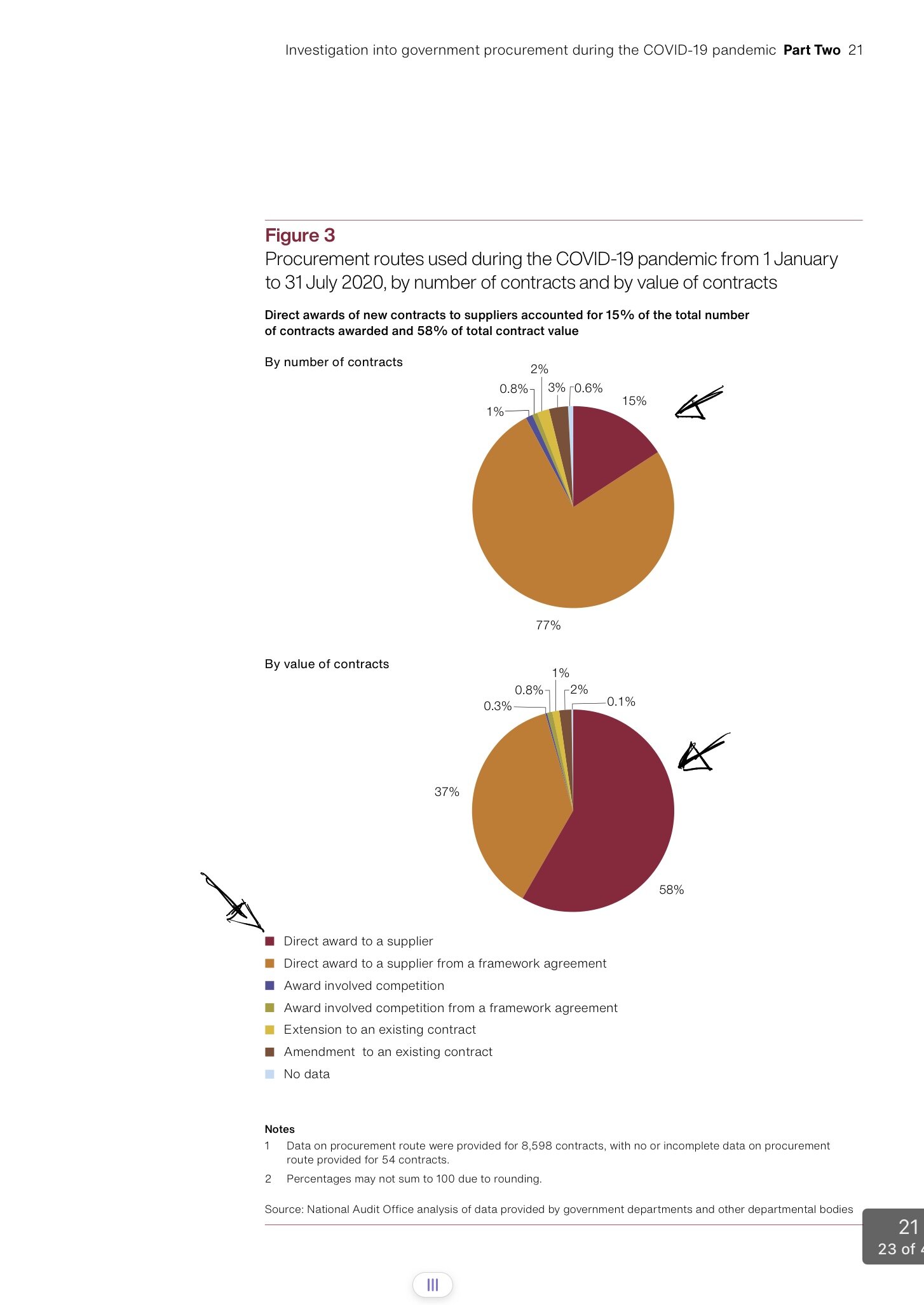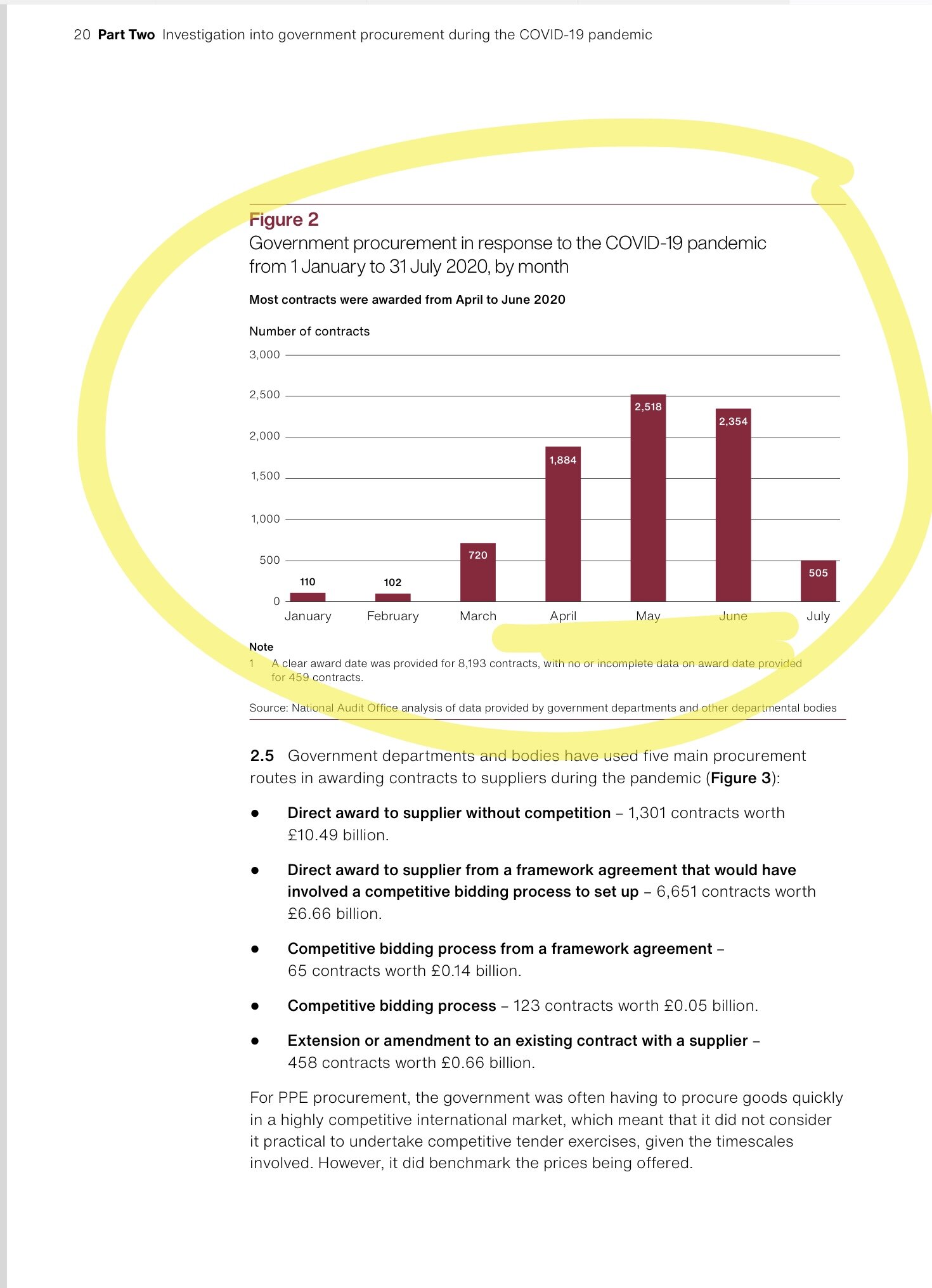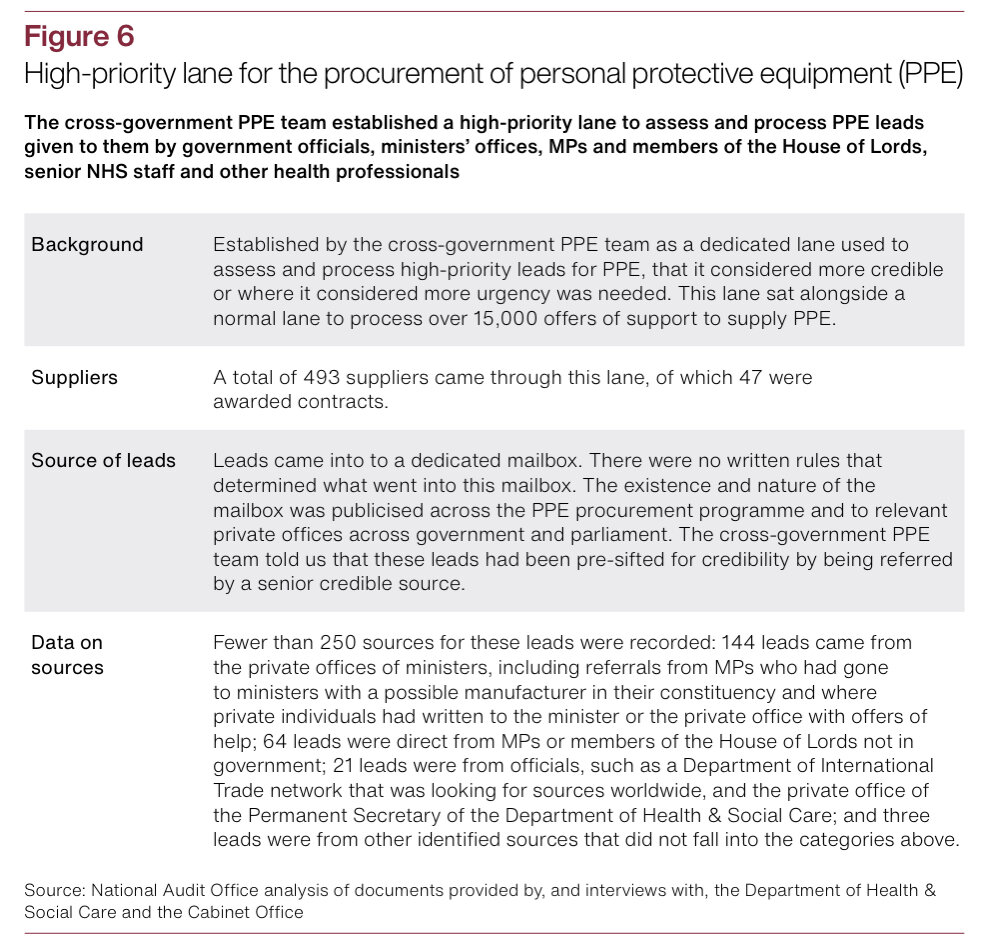The NAO report about COVID related procurement in the UK makes for a grim reading
The National Audit Office has just published this morning its report about the COVID related procurement practice in the UK up to the end of July. Despite the cautious and factual language, the truth is that as the title to this entry indicates, it makes for a very grim reading.
Here are a few highlights:

95% of all the spend connected with COVID has been done so via direct awards without any competition whatsoever. This can be observed by pooling together the two larger slices of the pie, that is individual direct awards and also those which happened inside framework agreements. The effect of either on competition is similar.
I think those two large slices should have been a single one, but the NAO's approach to break those direct awards down has a definitive advantage: at least this time we're seeing the blackhole effect in competition that is usually hidden inside frameworks.
The preference for direct awards inside or outside frameworks could be (partially) expected in the beginning of the pandemic, particularly with the scramble for PPE. What I was not expecting to see was the following:

Most contracts happened in May and June when the we were already a few months into the pandemic and the "scramble" for PPE was subsiding. As 92% of the contracts were awarded directly without competition, it is obvious the vast majority of contracts from May onwards were still being awarded without competition.
Contrary to popular belief, the requirements for direct awards (well those outside frameworks at least) as included in Regulation 32(2)(c) have to be met *for every single contract* and cannot be considered to met in bulk. Those grounds constitute exceptions to the general rules, need to be interpreted narrowly and need to be justified by the contracting authority. Just saying we're on a pandemic doesn’t cut it, despite the European Commission's best (worst) efforts in April.
Then we have what should come up as the real shocker to anyone working on a day to day basis in public procurement. In addition, to driving a cart through the procurement rules as shown above, the Government decided to create a "VIP route" for leads related with PPE contracts. Let that sink in for a moment: two ways of contacting the Government to offer your services/goods, one for VIP and the other for the unwashed masses.

Predictably, the success rate of approaches via the VIP route was much higher (43 contracts out of 470 leads) than that of the general one (104 out of 14,892). This may have defensible explanations, as the leads being of a higher quality than that of the general lane for example. However, it may be as well because the decision makers feel (rightly or wrongly) pressed to go over those offers more quickly or less strenuously than the general lane. This "badge of quality" of coming via the VIP channel may trigger a bias in favour of companies fortunate enough to have the right connections to use it.
However we want to paint the reasons behind the numbers, the mere fact of having *two* separate and hierarchical channels constitutes in and by itself a cardinal sin of procurement. This is patently discriminatory as otherwise what would be the point of having two channels at all?
So, what is happening here is the Government a prime example of the Government giving preference for those who have access to it instead of finding the best bid for a contract, the complete opposite of the whole logic of our system of procurement rules.
In other places we would call this preferential access to key decision makers by the names of nepotism or cronyism. I think we should call the spades by their name in the UK too.